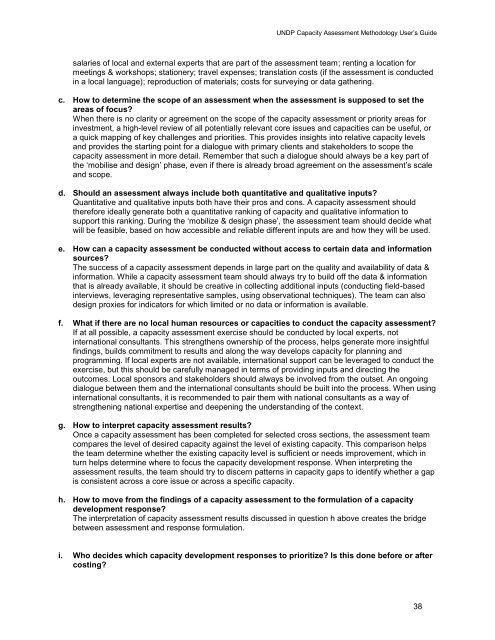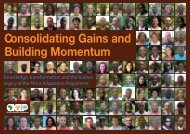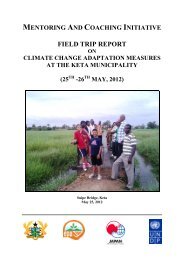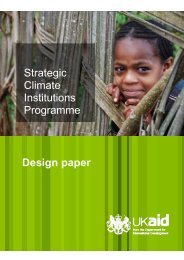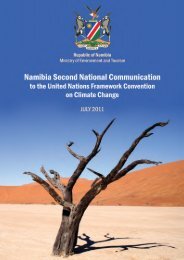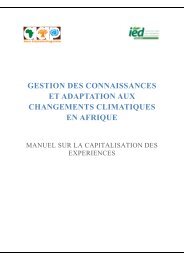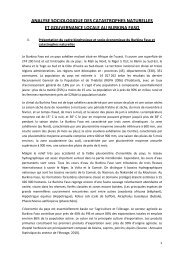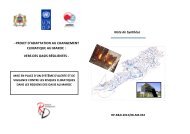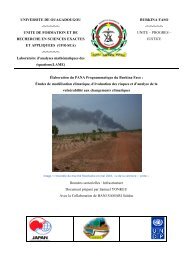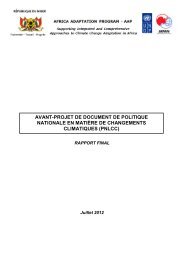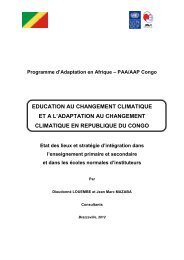UNDP Capacity Assessment Users Guide.pdf - Africa Adaptation ...
UNDP Capacity Assessment Users Guide.pdf - Africa Adaptation ...
UNDP Capacity Assessment Users Guide.pdf - Africa Adaptation ...
Create successful ePaper yourself
Turn your PDF publications into a flip-book with our unique Google optimized e-Paper software.
<strong>UNDP</strong> <strong>Capacity</strong> <strong>Assessment</strong> Methodology User‘s <strong>Guide</strong>salaries of local and external experts that are part of the assessment team; renting a location formeetings & workshops; stationery; travel expenses; translation costs (if the assessment is conductedin a local language); reproduction of materials; costs for surveying or data gathering.c. How to determine the scope of an assessment when the assessment is supposed to set theareas of focus?When there is no clarity or agreement on the scope of the capacity assessment or priority areas forinvestment, a high-level review of all potentially relevant core issues and capacities can be useful, ora quick mapping of key challenges and priorities. This provides insights into relative capacity levelsand provides the starting point for a dialogue with primary clients and stakeholders to scope thecapacity assessment in more detail. Remember that such a dialogue should always be a key part ofthe ‗mobilise and design‘ phase, even if there is already broad agreement on the assessment‘s scaleand scope.d. Should an assessment always include both quantitative and qualitative inputs?Quantitative and qualitative inputs both have their pros and cons. A capacity assessment shouldtherefore ideally generate both a quantitative ranking of capacity and qualitative information tosupport this ranking. During the ‗mobilize & design phase‘, the assessment team should decide whatwill be feasible, based on how accessible and reliable different inputs are and how they will be used.e. How can a capacity assessment be conducted without access to certain data and informationsources?The success of a capacity assessment depends in large part on the quality and availability of data &information. While a capacity assessment team should always try to build off the data & informationthat is already available, it should be creative in collecting additional inputs (conducting field-basedinterviews, leveraging representative samples, using observational techniques). The team can alsodesign proxies for indicators for which limited or no data or information is available.f. What if there are no local human resources or capacities to conduct the capacity assessment?If at all possible, a capacity assessment exercise should be conducted by local experts, notinternational consultants. This strengthens ownership of the process, helps generate more insightfulfindings, builds commitment to results and along the way develops capacity for planning andprogramming. If local experts are not available, international support can be leveraged to conduct theexercise, but this should be carefully managed in terms of providing inputs and directing theoutcomes. Local sponsors and stakeholders should always be involved from the outset. An ongoingdialogue between them and the international consultants should be built into the process. When usinginternational consultants, it is recommended to pair them with national consultants as a way ofstrengthening national expertise and deepening the understanding of the context.g. How to interpret capacity assessment results?Once a capacity assessment has been completed for selected cross sections, the assessment teamcompares the level of desired capacity against the level of existing capacity. This comparison helpsthe team determine whether the existing capacity level is sufficient or needs improvement, which inturn helps determine where to focus the capacity development response. When interpreting theassessment results, the team should try to discern patterns in capacity gaps to identify whether a gapis consistent across a core issue or across a specific capacity.h. How to move from the findings of a capacity assessment to the formulation of a capacitydevelopment response?The interpretation of capacity assessment results discussed in question h above creates the bridgebetween assessment and response formulation.i. Who decides which capacity development responses to prioritize? Is this done before or aftercosting?38


